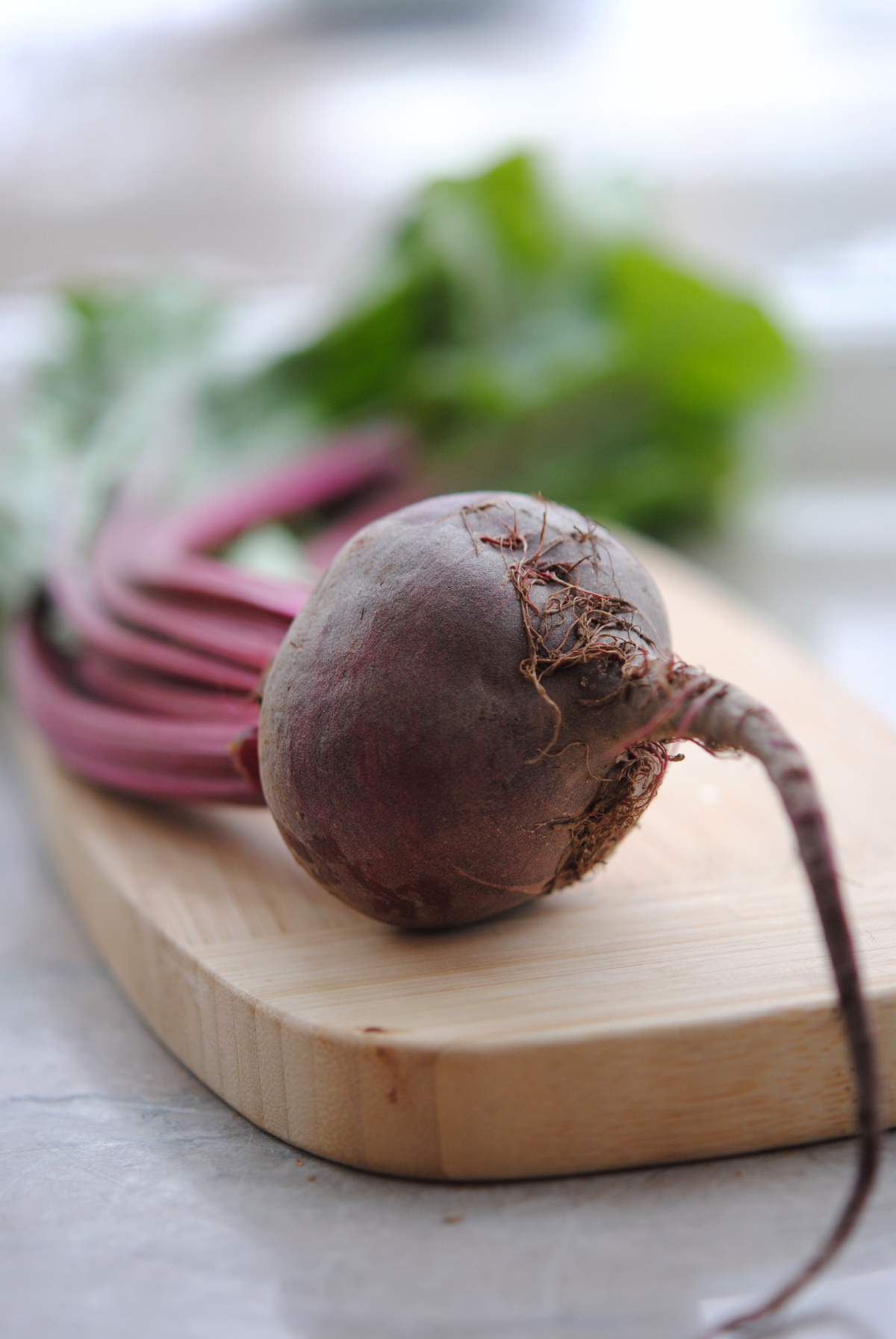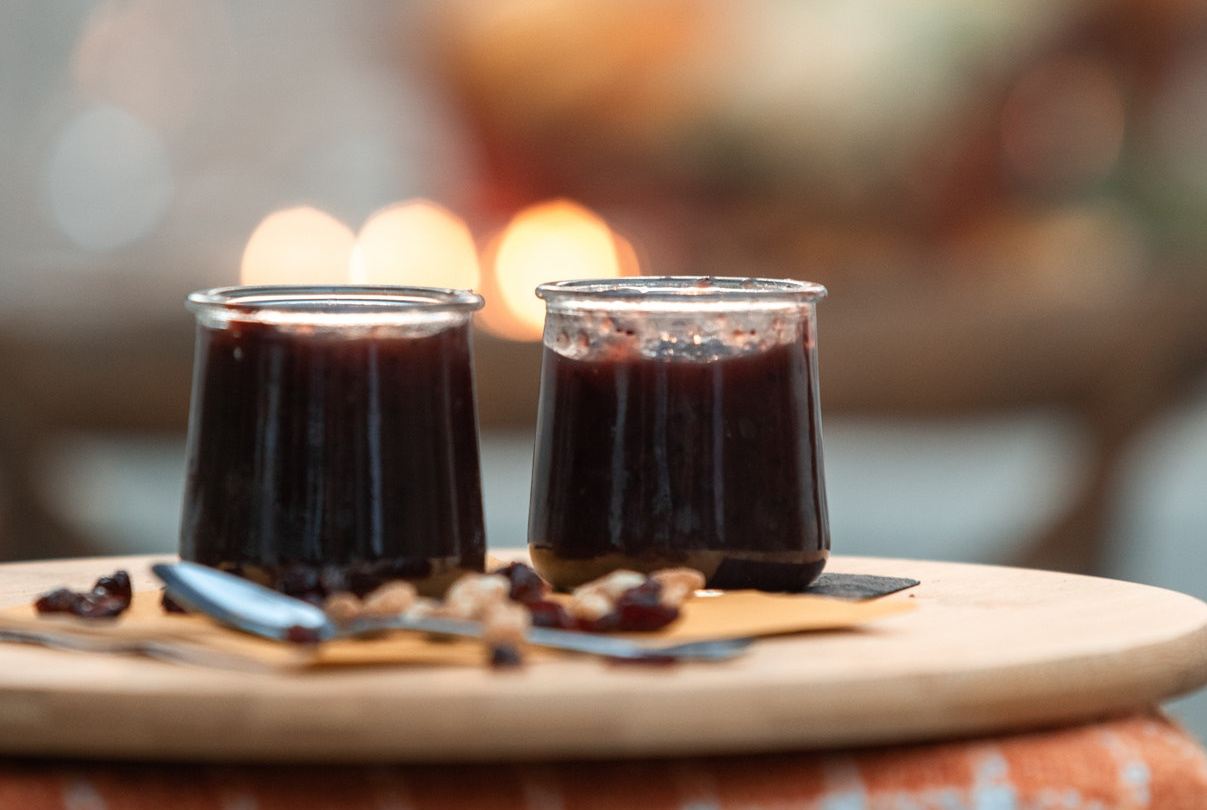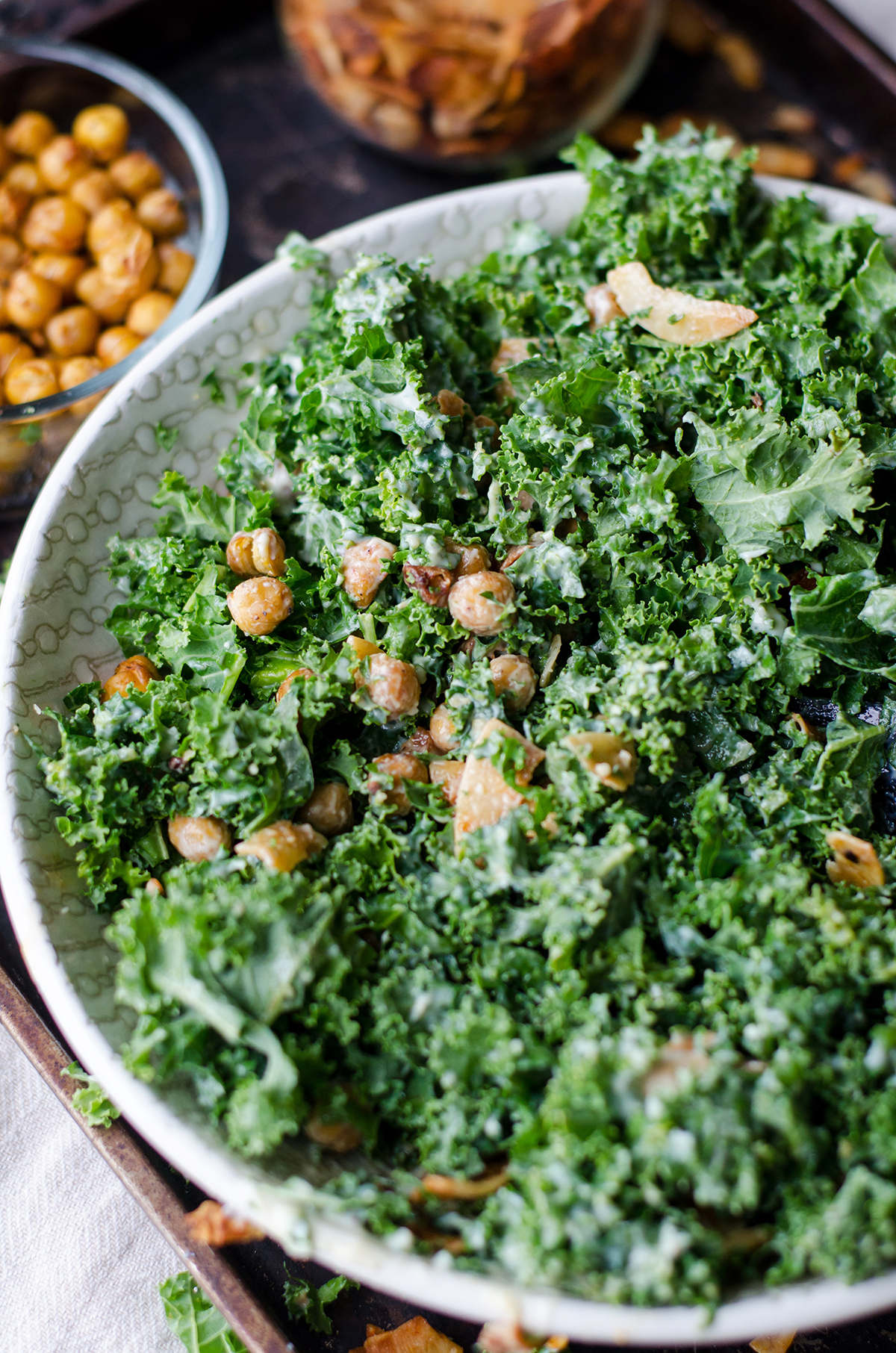
Balance Your Holiday Menu With Ayurvedic Six Tastes
Ayurveda teaches that all things in nature are made up of some combination of the five elements: earth, water, fire, air, and ether. This means that our bodies, the food we eat, the herbs that we benefit from, and even colors and aromas—are made of some combination of the five elements. This five-element paradigm is essential for understanding the three doshas (vata, pitta, and kapha). Also, Ayurveda has a unique way of looking at food, defining a balanced diet a bit differently than the Western model. In Ayurveda, all food is classified as having one or more of the six tastes: sweet, salty, sour, astringent, bitter, and pungent. We need all six tastes, but depending on one’s constitution, the current balance of the doshas, and the time of year, it is advisable to emphasize certain tastes and downplay others.
Rather than approaching the use of tastes from a clinical angle, in this post I will take a festive and light-hearted approach and explore how to balance your holiday menu with the ayurvedic six tastes. Things can get fairly complex and heady when you start to examine how to classify foods by taste, the elements, and their impact on one’s constitution. So, for our purposes here, let’s keep it simple and light. (You probably don’t need more stress when it comes to planning a holiday menu!)

The Ayurvedic Six Tastes
Let’s begin with some basic information on the ayurvedic six tastes: sweet, salty, sour, astringent, bitter, and pungent. Foods with a sweet taste are considered to be the heaviest and nutritive. The bulk of one’s diet should consist of sweet foods, as the nature and purpose of food is to nourish. The pungent taste is the lightest and most purifying, with the bitter taste coming in at a close second. There are plenty of foods with a pungent and/or bitter taste, and many plants with these lighter, more purifying tastes tend to be classified as herbs.
The table below summarizes the ayurvedic six tastes, their corresponding elements, and a few examples of foods that fall under each category.
| Taste | Elements | Foods |
| Sweet | Earth, Water | Rice, dates, cow’s milk, sweet potatoes |
| Salty | Water, Fire | Seaweed, rock salt, sea salt |
| Sour | Fire, Earth | Lemon, yogurt, fermented foods, alcohol |
| Astringent | Earth, Air | Cranberries, kidney beans, cauliflower, white potatoes |
| Bitter | Air, Ether | Dandelion greens, turmeric, bitter melon |
| Pungent | Air, Fire | Chili peppers, garlic, black pepper, radishes |
Balancing the Six Tastes
Now that you have been introduced to the six tastes, you may be wondering in what proportion to enjoy foods of each taste. There is not a simple answer, but easily put, it is ideal to have all six tastes throughout the day. Depending upon the season and your constitution, you will want to highlight or downplay specific tastes. Since we are in autumn, the sweet, salty, and sour tastes are generally best to emphasize. (More on that in my post 3 Tips for Managing Vata Dosha in Autumn.) As we move into deep winter and then ultimately early spring, you will want to highlight the bitter, pungent, and astringent tastes. (You can read more about this in my post How to Stay Energetically Balanced in Winter.)
If you are planning a large meal, it can be fun to experiment with incorporating all six tastes into one meal. In fact, Dr. Vasant Lad (1994) suggests incorporating all six tastes into the midday and evening meals on a daily basis. If it doesn’t come together perfectly, no big deal, but think of it like a flavor exploration. Each taste is like a musical instrument, with a unique tone and effect. When the six tastes come together in harmony, it’s like a symphony of flavors.

Sweet: Cool and Nourishing
The sweet taste, being composed of earth and water, is cooling and tonifying. It reduces and pacifies vata and pitta doshas, and provides strength and invigoration (Lad & Lad, 1994). Now let’s consider some foods that you may find on your holiday table that have the sweet taste: sweet potatoes, cooked onions, parsnips, beets, and many grains, including wheat, rice, barley, and fresh corn. Also, turkey is considered both sweet and astringent, and most meats are classified as sweet (Lad & Lad, 1994). Essentially, the foods that tend to provide heft to a meal typically fall under the sweet taste.
Incorporating the sweet taste into your holiday menu will probably not be too much of a challenge. Most meats, breads, and root veggies all have a sweet taste. Also, sugars and desserts are an obvious source of the sweet taste. However, if you make a tart cherry pie, you are also incorporating the astringent and sour tastes.

Sour: Liquid, Light, and Heating
The sour taste is composed of earth and fire, and foods with this taste are generally liquid, light, heating, and oily (moist) (Lad, & Lad, 1994). These foods generally increase pitta and kapha doshas and pacify vata dosha (there are some nuances to this depending on the specific food). Foods and herbs with a predominant sour taste offer a number of benefits, such as stimulating the appetite, improving digestion, nourishing the heart, and boosting energy (Lad, & Lad, 1994). Examples of foods with the sour taste include lemon, yogurt, and most fermented foods such as pickles, sauerkraut, and kimchee. Also, as mentioned above, some fruits offer a bit of the sour taste—tart cherry, pineapple, and green grapes being examples.
Beginning your holiday feast with a touch of the sour taste is a good idea as it stimulates the appetite. On the other hand, if you prefer pickles over pie, be cautious of overdoing sour foods, as they can overheat the body and mind and lead to a pitta imbalance. Yet, all things in moderation…consider setting out some small bowls of your favorite pickles along with the appetizers. (I am a big fan of pickled okra and pickled beets, and the tiny French pickles, cornichons, make attractive appetizers.) Or, just a tablespoon or two of kimchee or perhaps some spicy pickled carrots can add color, flavor, and a bit of a spicy-sour kick alongside your holiday plate.

Salty: Heavy, Warm, and Watery
The salty taste is made of water and fire, and thus some of its qualities are heavy, warming, and mobile. Vata dosha is pacified by the salty taste and pitta and kapha doshas are increased. Taken in moderation, the salty taste is essential for maintaining electrolyte balance, improves the flavor of food, and stimulates digestion (Lad & Lad, 1994). In excess, it can lead to water retention and a number of pitta and kapha imbalances.
Other than salt itself or condiments such as coconut aminos, there are not a lot of foods with the salty taste. Fish from the ocean is one example, and cottage cheese has a sour and salty taste (Lad & Lad, 1994). Especially during the colder months, miso is one of my favorite sources for the salty taste. I like to enjoy it as a snack before meals. It can be useful if you are busy cooking and getting ready for guests and need a little nourishment to hold you over. Or, sipping on a cup of miso broth after an evening out can soothe the throat, hydrate, and provide warmth. Also, if you are planning an Italian-inspired holiday meal and like to make your own vegan pesto, a couple of teaspoons of white miso paste can be a nice stand-in for parmesan cheese (Morningstar, 1995).

Astringent: Heavy, Cool, and Dry
The astringent taste is composed of earth and air. Its qualities are heavy, cool, and dry. Foods and herbs with the astringent taste tend to be especially balancing for pitta dosha, moderately balancing for kapha dosha, and will aggravate vata if taken in large amounts (Frawley, 2000).
Pomegranate, persimmon, okra, split peas, turmeric, alfalfa sprouts, cauliflower, avocado, and cranberries all possess the astringent taste (Lad & Lad, 1994). When it comes to foods with the astringent taste, there are many tasty options that are in season in fall and winter. Personally, I am a huge fan of okra, and during the late summer and early fall, we purchase it fresh from a local organic farmer in Western North Carolina. I have discovered that if you get really good, fresh organic okra, you can even munch on it raw! Roasting and pickling are two other excellent ways to prepare okra. So, if you can get ahold of some good fresh okra when it’s in season, consider pickling it ahead of time for your holiday spread—it makes fun holiday gifts too!
Another zingy (and colorful) astringent-tasting food that is perfect for your holiday menu is cranberries and cranberry sauce. Cranberry sauce is certainly a holiday classic and this is probably my all-time favorite cranberry sauce recipe.

This cranberry sauce is a holiday classic and then some. The citrus and spice are distinctive and add perfect sour and pungent accents to the astringent cranberry base. After trying this recipe, you will probably wonder why we don’t eat cranberry sauce all year round! Yield: about 4 cups (serving size: 1/4 cup).
1 cup sugarZingy Cranberry Sauce
Adapted from Cooking Light
3/4 cup fresh orange juice
1/2 cup white wine
1 cinnamon (Cinnamomum verum) stick
2 cups Granny Smith apples (or other tart apples), diced and peeled
1 1/2 teaspoons fresh ginger (Zingiber officinale) rhizome, peeled and minced
1/8 teaspoon ground red chili pepper
12 ounces fresh cranberries
1 tablespoon grated orange rind
1/2 cup coarsely chopped walnuts, toasted

Bitter: Cool, Light, and Dry
The bitter taste is composed of air and ether. It is light, cool, dry, and purifying. Foods and herbs with the bitter taste generally pacify pitta and kapha doshas and increase vata dosha. Small amounts of the bitter taste can stimulate digestion and will promote the flavor of other tastes. Also, foods and herbs with the bitter taste are often used for their cooling and purifying effect on the liver, blood, and skin (Lad & Lad, 1994). However, those with a light, dry vata constitution should be cautious of overindulging in the bitter taste, as it can cause depletion and unwanted dryness and tissue reduction if taken in excess.
The mainstream North American holiday menu tends to include very few foods with the bitter taste, if any. Yet, including dark, leafy greens is an excellent way to balance out the sweet foods that tend to dominate many holiday spreads. Think dandelion greens, kale, and possibly pre-empting your holiday meal with a dropperful or two of digestive bitters.

Pungent: Light, Hot, and Dry
The pungent taste is composed of air and fire. It is light, hot, fiery, and purifying, and thus balances kapha dosha while increasing vata and pitta doshas. Spicy foods are pungent, examples being radish, chili peppers, raw onion, garlic, mustard, ginger, and black pepper.
Pungent foods and spices stimulate digestion and circulation. However, overuse can cause dryness, irritation of the mucous membranes, and on a subtle level, agitation. Yet, just a touch of spiciness not only boosts flavor, it can also remove stagnation and even support clarity of perception (Lad & Lad, 1994).
You probably won’t have to look too far to find ways of integrating the pungent taste into your holiday menu. In fact, the Zingy Cranberry sauce (recipe above) contains ginger and chili pepper, which are pungent. Cinnamon is both sweet and pungent. Also, many of the sour, pickled foods that I discussed, such as kimchee, possess the pungent taste. And of course, there is always the option of fresh-ground black pepper, which goes perfectly on creamy mashed potatoes!
In Closing,
As I emphasized earlier, I hope that this post serves as inspiration for your holiday festivities. I find a great deal of beauty and poetry in Ayurveda, and when you begin to balance the six tastes, you may discover a harmonious symphony—on your plate, on your taste buds, and in your belly!

REFERENCES
Frawley, D. (2000). Ayurvedic healing: A comprehensive guide. Twin Lakes, WI: Lotus Press.
Lad., U. & Lad., V. (1994). Ayurvedic cooking for self-healing. Albuquerque, NM: The Ayurvedic Press.
Morningstar, A. (1995). Ayurvedic cooking for Westerners. Twin Lakes, WI: Lotus Press.








